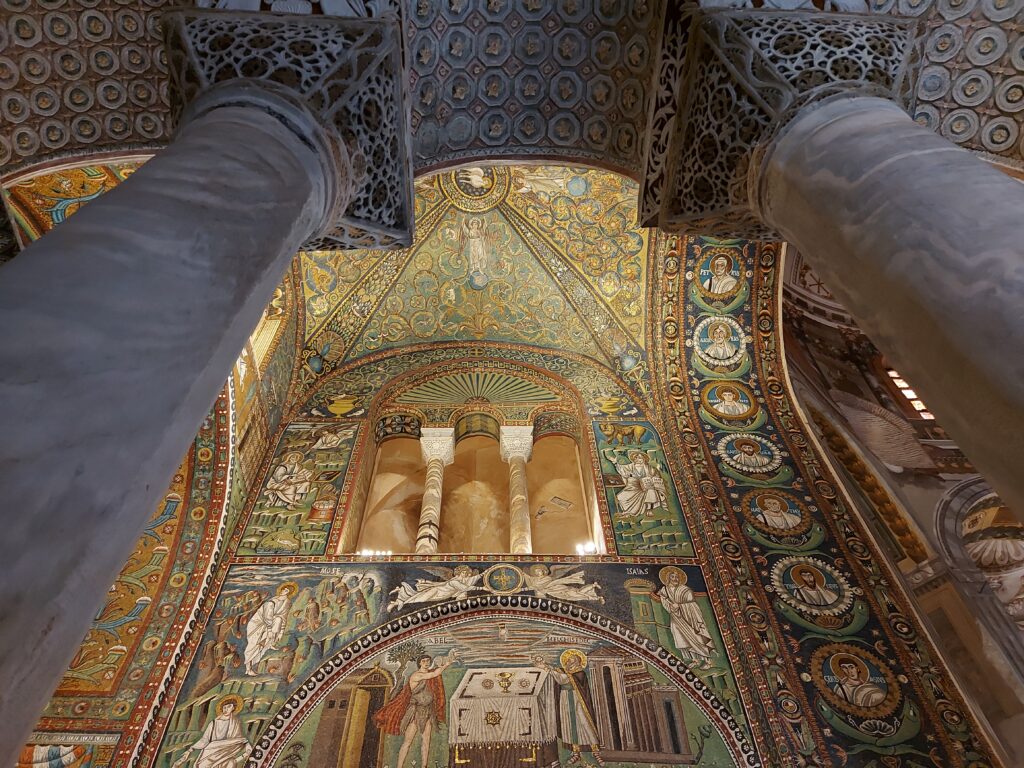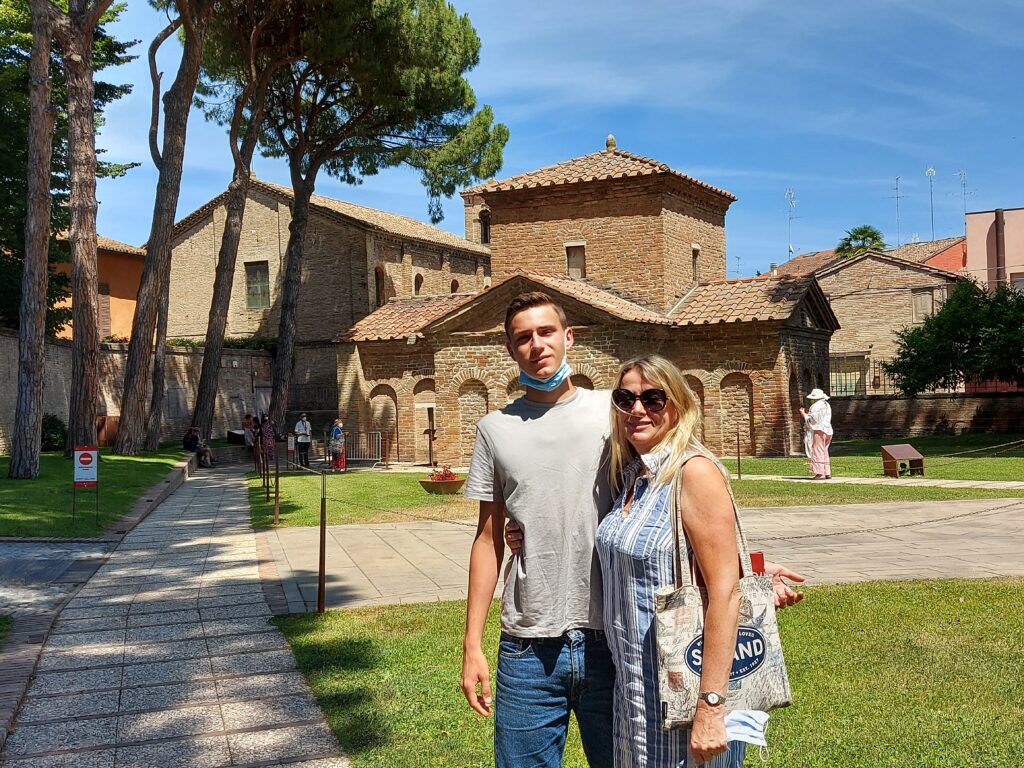Sometimes all that glitters is gold: Ravenna’s San Vitale Basilica
It has been years that I’ve wanted to visit Ravenna and its spectacular early Christian churches with their stunning moasics. Of course, I had seen all the photos, but somehow nothing prepares you for visiting in person and taking in all that beauty surrounding you.
In San Vitale, all that glitters most certainly is gold!
Even its conception was steeped in gold.
Construction of this masterpiece of paleo-Christian and Byzantine art and architecture was financed by a wealthy banker – probably Greek – and was paid for with a jaw-dropping 26,000 gold coins. It was built between 527 and 548 AD, when Ravenna carried the mantle of the Christianity’s (western) Byzantine capital.
Following the Fall of Rome, Constantinople became the Byzantine capital. When the Byzantines defeated the Ostrogoths and took back control of Italy in 540, Ravenna became the administrative center and a type of sister city to Constantinople.
The moasaics that cover the space and vie for visitors’ attention were typical of the Hellenic-Roman style of the time. Gold, green and blue dominate and the rich imagery and level of detail is incredible to examine.
This was built in the reign of Byzantine Emperor Justinian I (527 – 565) and these spectacular mosaics of Emperor Justinian and his wife, Theodora, are the ones you will find reproduced in every history textbook.

The two separate mosaics face one another and depict them taking part in a Holy feast. They are filled with spectacular details. Justinian is dressed in purples and golds – Byzantine imperial colors – and is making an offering for the feast. The level of details, and the folds in the clothing, even the numerous fabric patterns among the ladies flanking Emperess Theodora, is simply astounding.

Interestingly, the most well-known likenesses of the Emperor Justinian and Theodora – and the ones most commonly depicting them for students of history – were never seen by the Emperor himself. For Justinian and Theodora never visited Ravenna from Constantinople, so never saw these masterpieces that would be most closely associated with them.
The lunettes depict, in great detail, many of the biblical stories from the old Testament : the Sacrifice of Isaac, Moses and the Burning Bush, Cain and Abel.

Christ and the Twelve Apostles are depicted high, in separate lunettes spanning one arch – each lunette is framed by playful fish, the symbol of early Christianity.
The Agnus Dei, the Lamb of God, is at the peak, surrounded by stars and a lunette framed by foliage and fruits, depicting the lushness and beauty of Paradise. He is also flanked by four angels.

On one apse – Christ the Redeemer is dressed in the Imperial purples and golds and seated atop the globe, surrounded by four angels.
This is supposed to have been inspired by the passage in the Old Testament in which the Lord says “Heaven is My throne, and earth is the footstool for My feet”. He offers the martyr’s crown to Saint Vitale. Below Christ flow the four holy rivers from the Genesis.
San Vitale was, for me, the most spectacular of the Byzantine monuments, but it is one of a series Byzantine architecture in Ravenna. I will write about other churches in future posts
Not surprisingly, these maserpieces have been named a UNESCO Heritage site, “They show great artistic skill, including a wonderful blend of Greco-Roman tradition, Christian iconography and oriental and Western styles.”
They include the Mausoleum of Galla Placidia, the Neonian Baptistery, the Basilica of Sant’Apollinare Nuovo, the Arian Baptistery, the Archiepiscopal Chapel, the Mausoleum of Theodoric, the Church of San Vitale, and the Basilica of Sant’Apollinare in Classe.
As an admirer of the Austrian artist Gustav Klimt, I was interested to learn he visited Ravenna in 1903 and was deeply struck by that visit. Immediately after his return, he began his so-called gold phase of his art.
Were I even slightly artistically talented, it would certainly inspire me! Artists or not, be sure to visit Ravenna and be inspired by these spectacular Byzantine mosaics – where all that glitters is most certainly (ancient) gold!
